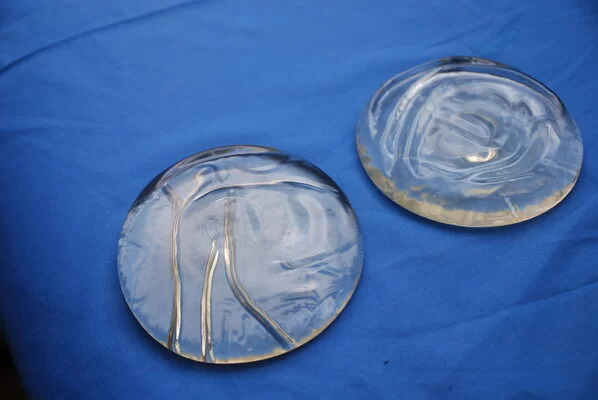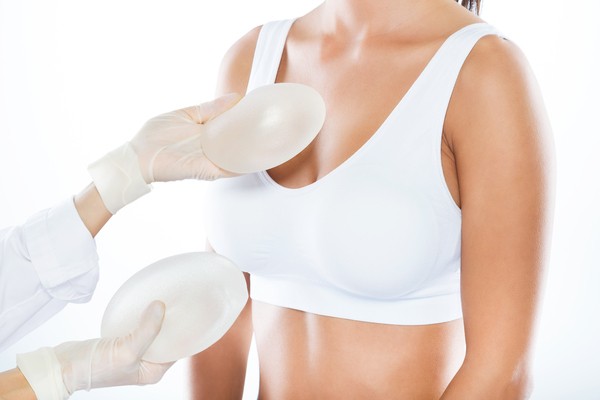
Pros And Cons Of Saline Breast Implants
Introduction:
Breasts form an important part of a woman’s physical appearance. So, enhancing the shape and size of breasts can contribute to a major makeover for women. It increases their self-esteem. Different types of implants are used for breast augmentation depending on one’s needs and goals.
Although all breast implants are FDA-certified, a large portion of the population opts for saline breast implants. They feel it to be a safer choice due to its natural saltwater content. This post aims to guide you about the advantages and disadvantages of saline implants for breast augmentation.
What are saline breast implants?
These are breast implants with saline solution filled inside. The outer shell, however, is made up of a silicone shell.
What are the pros and cons of saline implants?
For you to make an informed choice, we have highlighted the major advantages and disadvantages of saline breast implants.
1. Pros
1. Small incision:
This is one of the biggest advantages of saline breast implants. They are filled with salt water once placed inside the breast. This ensures a minimal incision below the breast. Hence, there is no scar on the breast.
Additionally, a saline implant for breast augmentation can be inserted through an underarm incision. Thus, the procedure is almost scarless. The minimal incision scar is inconspicuous.
2. On-spot modifications:
The size of the breast implant needed depends upon the patient’s goal and expectations from the procedure. This is decided during an initial consultation itself before the actual surgery date.
However, to maintain perfect symmetry between both breasts, minimal changes may be required during the surgery.
In this aspect, saline implants offer great flexibility. They are empty. Once positioned inside the breasts, the breast surgeon injects saline solution to inflate the implants to the desired size. Hence, they may make the necessary changes in terms of volume and size as required during the procedure.
3. Non-toxic:
Breast implants with saline contain natural saltwater. Hence, they are non-toxic. Although silicone is non-toxic too, patients feel greater mental satisfaction with saline implants when it comes to safety.
4. Rupture is easily detectable:
In the rare event of an implant rupture, saline breast implants are practically harmless.
- They are easily detectable (as the implant deflates after a leak or a rupture). Hence, patients can take action soon enough. They may either remove or replace the implant.
- The saltwater, if leaks, is absorbed by the body itself (being a natural ingredient, saline causes no health hazard).
5. Cost-effective:
Saline breast implants come at an affordable cost.
6. Lower age limit:
Individuals aged 18 years and above can opt for saline breast implants. Silicone implants, on the other hand, are not legal for persons below 22 years of age.
2. Cons
1. Uncomfortable:
Saline implant users may complain of discomfort because
- They are heavy.
- The saline solution being fluid, often sloshes and whirls inside the implant during any regular activity. This feels uncomfortable. This rippling of water is often visible from the outside. This is especially so in skinny women and in those who lack native breast tissue.
Therefore, they are not the choice of implant for individuals who have little to no natural breast tissue. This includes breast reconstruction and gender reassignment surgeries.
- There is an increased chance of rotation of these implants. This is more so in individuals who had small or no breasts initially. As a result, not enough scar tissue develops that can provide a firm attachment to the implant.
To overcome these flaws, structured saline implants are in use nowadays. These contain channels within them. The saline solution flow through these channels into separate chambers. This significantly reduces the rippling effect.
2. Feel hard:
Breast implants with saline solution feel hard to the touch. This is not exactly the feel of natural breasts.
3. Don’t offer the natural shape of breasts:
Saline breast implants are fully round. This gives the look of artificial breasts since the natural ones are teardrop shaped. However, they impart fuller perkier breasts. Women who choose saline implants usually expect this round and robust look.
4. Spontaneous rupture detection:
This may sound like a good point since it allows immediate action and prevents any health hazard. However, when a woman is at the workplace and the implant leaks or ruptures, it leads to an embarrassing situation. Saline implants deflate as soon as there are leaks or ruptures. This is prominent in the huge difference in size and shape of the two breasts.
However, implant ruptures are not very common.
How many years do saline implants last?
Saline implants last for nearly 10-15 years. However, most women either remove or replace them within 8-10 years.
Can your body reject saline implants?
Like any other medical device, saline implants trigger an immune reaction. Hence, a woman may experience redness, swelling, bruising, or mild pain following placing the implant. This is temporary and resolves within a few weeks. This is not “rejection” per se. This reaction stimulates scar tissue formation which helps to hold the implant in position.
However, excess scar tissue formation around the implant can cause wrinkling and hardening of the skin around the implant. This is known as “capsular contracture.” The risk of developing this is higher in saline breast implants. Revision surgery to remove this scar tissue helps in correcting the condition.
Which implant is best for me?
Only your breast surgeon can give the correct information about this. Many factors are responsible for deciding the right type of implant for your breast surgery.
To get accurate information and the exact outcome you desire, contact Dr V. S. Rathore. He is one of the best breast surgeons in Kolkata. He has immense knowledge regarding cosmetic breast surgeries owing to his 18+ years of experience.
Also Read: Pros And Cons Of Using Silicone For Breast Implants









